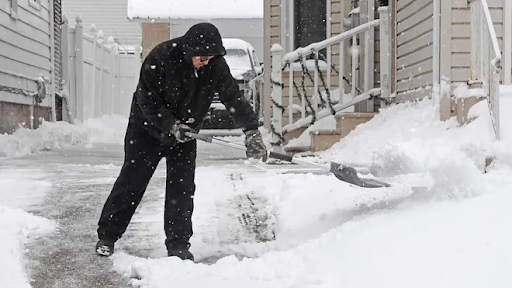Predictions anticipate a mild, wet winter for New Jersey. From December through February, forecasters foresee a warmer winter with decreased snowfall. Although milder conditions are expected, La Niña may influence prevailing conditions. Milder temperatures are expected in New Jersey and surrounding states including New York and Pennsylvania.
While warmer-than-average temperatures are expected, La Niña may affect winter conditions. NJ.com states, “La Niña is a natural climate pattern that develops when sea surface temperatures near the equator in the eastern Pacific stay cooler than average for extended periods.” La Niña can alter winter conditions including temperature and precipitation.
According to the farmer’s almanac, New Jersey will experience precipitation that will fall as either rain or sleet. Similar to previous years, New Jersey expects to average about 34 inches of snow in North Jersey, 28 inches in Central Jersey, and 18 inches in South Jersey.
Last year, predictions made by forecasters proved to be partially accurate. Previously, a prediction suggested “an arctic blast accompanied by heavy rains and snows in the East between Jan. 12 and 15, during which a storm dropped several inches across North Jersey. ”
Climate change continues to affect increasing winter temperatures as human activity plays a significant role in the increase in temperatures.
The increase in temperatures is observed not only in New Jersey, but the rest of the country as well, according to the Environmental Defense Fund: “From 1970 to 2024, average winter temperatures rose in 235 out of 241 locations in the U.S. studied in one analysis, by an average of 4 degrees Fahrenheit. Cold snaps, on average, are becoming shorter, and the number of days with temperatures below 32 degrees Fahrenheit has declined — and is expected to continue to drop across the country.”
Mrs. Evans, an environmental science teacher at Rancocas Valley stated, “Historical climate data shows a trend of rising average winter temperatures over the past century, and this data coincides with increased greenhouse gas concentrations linked to the burning of fossil fuels.”
The trend of warmer winters is one of the many effects of climate change, with consequences that extend beyond the winter season. Rising temperatures can disrupt ecosystems, create cycle imbalances, and present risks for living organisms.
Mrs. Rahner, a biology teacher at RV, explains the long-term effects of the increase in winter temperatures: “More rain and less snow means [percipitation] will run off faster instead of slowly seeping through the soil for the plants and for recharging the aquifers which is the groundwater we access for drinking, bathing and irrigation.” “Warmer winters also mean less water stored in plant tissues which leads to earlier and more frequent risk of forest fires here in the Pinelands,” she added.
New Jersey is expected to experience a milder, wetter winter, influenced by La Niña’s pattern. As average temperatures increase, the amount of anticipated snowfall is expected to decrease. The long-term effects of a warmer winter can lead to broader environmental risks.















